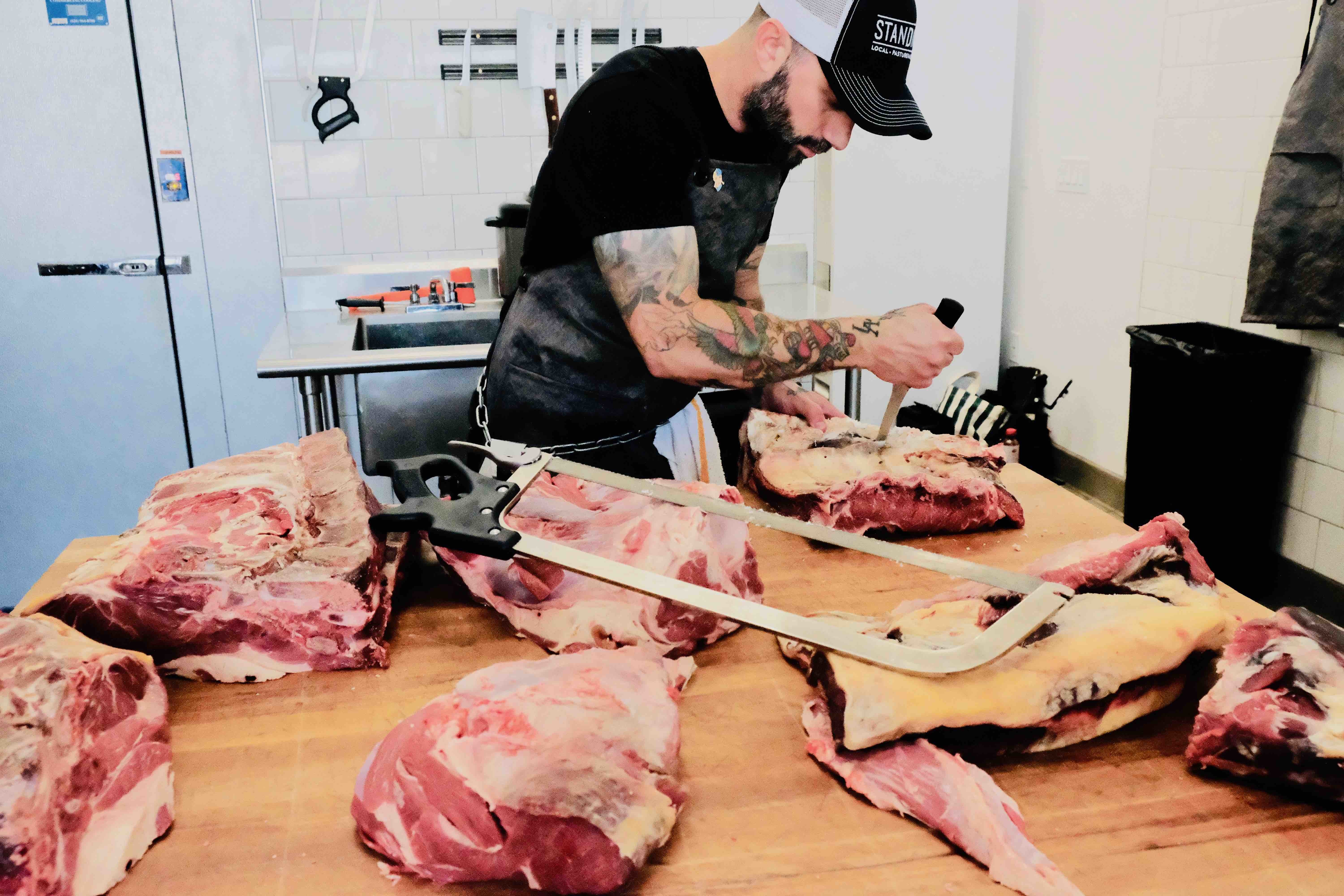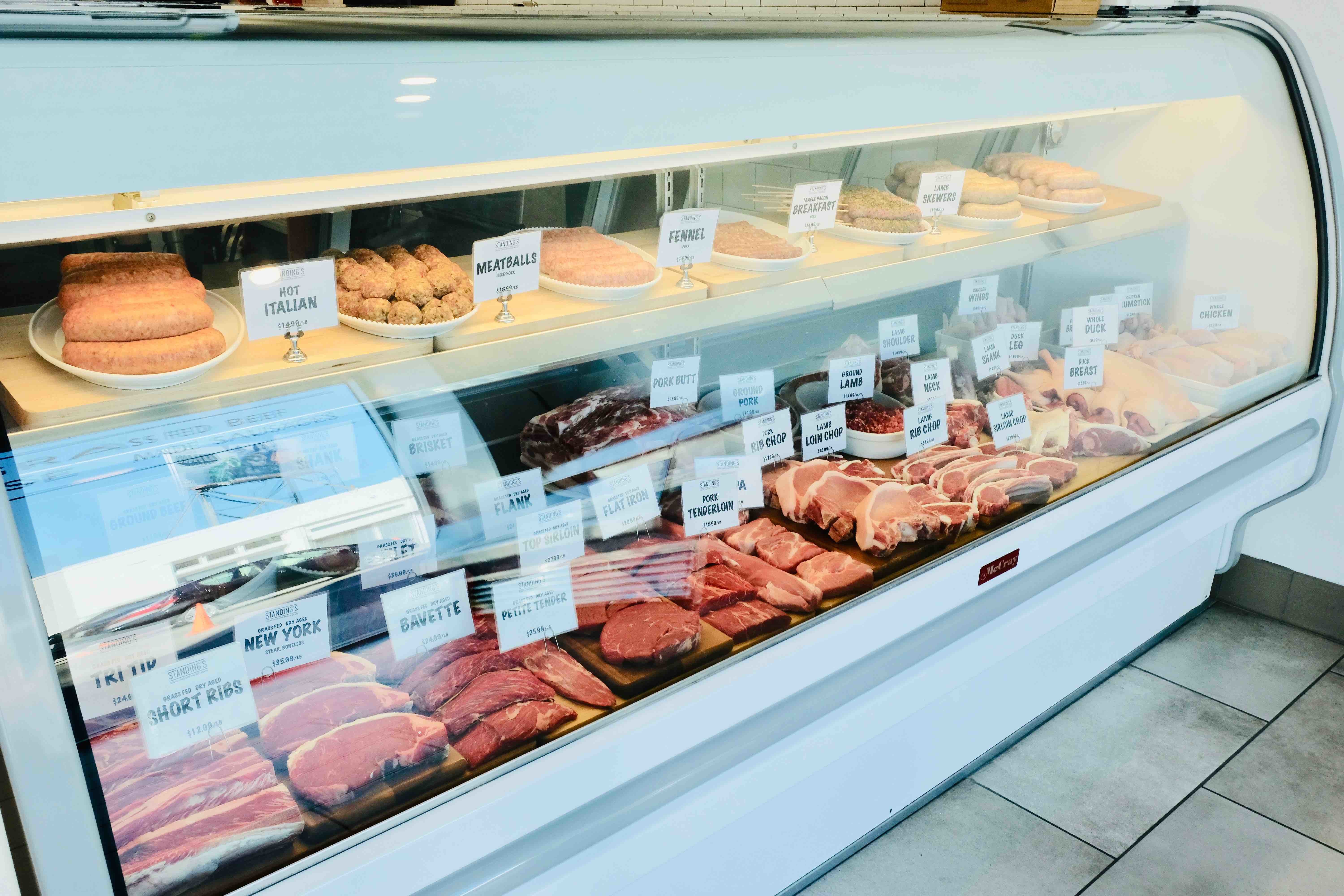Butchered By Hand
What's the difference between a Chuck and a Loin?
We stopped by Standings Butchery, Los Angeles's top spot for high quality and ethically raised meat, to find out a little bit more about steaks. Watch JAM's video below documenting butchering by hand.

Standings is passionate about healthy, happy animals, thoughtfully sourced, expertly butchered by hand. They pride themselves on being able to utilize every single part of the animal, tell you how to cook any cut, and make individual recommendations and answer any questions.
Jered Standing, the owner/creator of Standings (and an ex-vegetarian!), invited us to watch as he took apart an entire side of a cow - teaching how the animal becomes the steaks we eat.

The shop he opened a year ago (Happy Anniversary!) on Melrose specializes in local, pasture-raised whole animals - meaning, their cows are from a small local farm in Bakersfield called Redhouse Farm where Jered himself visits to make sure he gets to check how old they actually are and that "grass fed" really means grass fed for the full 24 - 26 months on pasture rather than the normal shorter period of 10-12 months.
And this passionate butcher doesn't just sell high caliber rib eye steaks...we found homemade bone broth, dog food, stock, chili, sausages, and pulled pork. We really appreciate his special efforts in being part of a tribe of like minded people who care about where and how their food is being made.
Music - "Breathin' In" by Raoul and The Big Time
Types of steak and how to cook it right

Chuck: Because it's a tougher cut, you need to pay special attention; if you keep it on the grill too long, chuck's gonna be tougher than a Texas Ranger. You can also braise it, but you'll definitely want to hit it with some tenderizer first. Or tie it up and roast it. If all else fails, a trip to a slow cooker will do.
Brisket: There are a billion ways to cook it, but in the interest of not being shot by the whole of Texas, the best way is to crack open a beer and hit it with a rub and slow smoke until it's basically falling apart.
Flank: Because cows apparently have washboard abs (sleeping standing up is great for the core, apparently), you're gonna need to marinate this sucker, then either braise it or broil the heck out of it.
Beef Neck: Braise it! First get them seared in batches to form a nice crust, and then braise in a mixture of red wine, stock, and other ingredients and comes out rich and extremely tender.
Denver: The chuck roll is known for producing tougher cuts of meat often ground or used for stewing. But don’t let the origins of Denver Steaks fool you. This beautifully piece of meat will yield a gorgeously tender steak if cooked to medium-rare or medium with a watchful eye.
Chuck Eye: The chuck eye does not quite have the flavor of the rib eye, particularly the money muscle around the top, outer edge, and isn’t quite as tender, but it is darn close. And for the price difference, it’s well worth the slight downgrade. Keep it away from medium and marinade prior to grilling.
Ranch: The ranch steak comes from the chuck primal. This is the section of the cow closet to the head. Steaks cut from this section can be tough if overcooked. But there is good flavor to be had and enough fat to keep the meat from drying out… throw it on the grill with a little black pepper and keep it medium, medium rare.
Flat Iron: So where has this steak been all of our life? Well, the top blade roast was actually ignored for years due to a tough connective tissue that runs through its center. Once the connective tissue was removed and the roast was separated into two distinct pieces, the flat iron steak was born. Now that you’ve been properly introduced, marinade or let its rich flavor shine alone on the grill.
Shank: The crosscut beef shank is basically just what it sounds (and looks) like: A crosscut piece of the animal's leg. It's full of tendons and muscle, and a chunk of bone. It doesn't look very pretty, and if you tried to cook it fast, it would be tough and hard to chew. But if you cook this meat low and slow, the marrow in that bone melts out, helping create a smooth, rich sauce, and the meat itself gets melting and tender.
Petite Tender: This steak may be one of the least known. Which is unusual, because it’s the most tender muscle after the filet. So why haven’t you heard of it? Well, like most of the rare steaks, it takes a little more time, labor and skill to extricate this cut instead of leaving it as a whole shoulder clod, and the bigger processing plants just don’t have time for stuff like that. And perhaps even more unusual, because it also happens to be more than half the price of a filet but just as delicious if done right.
